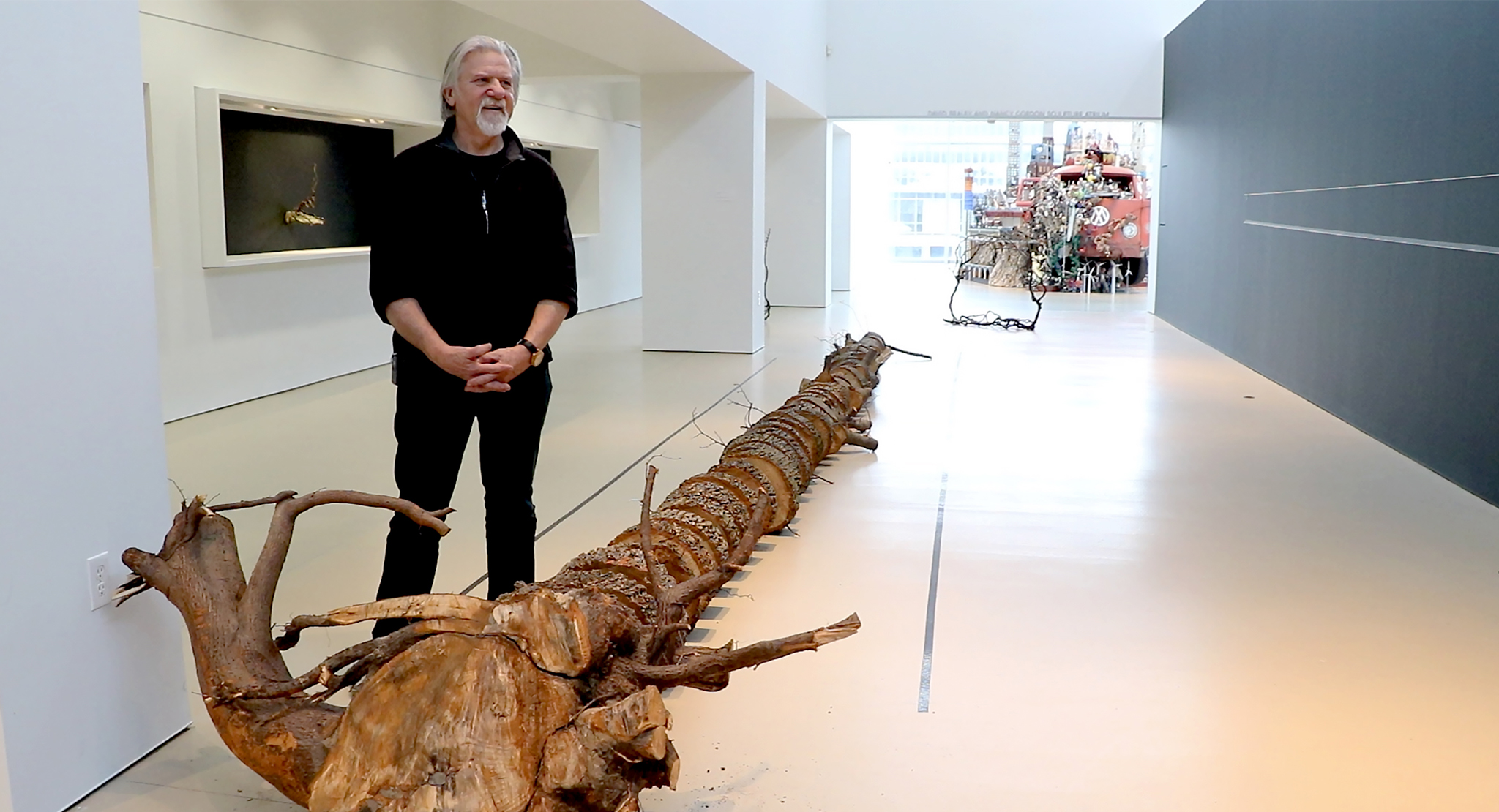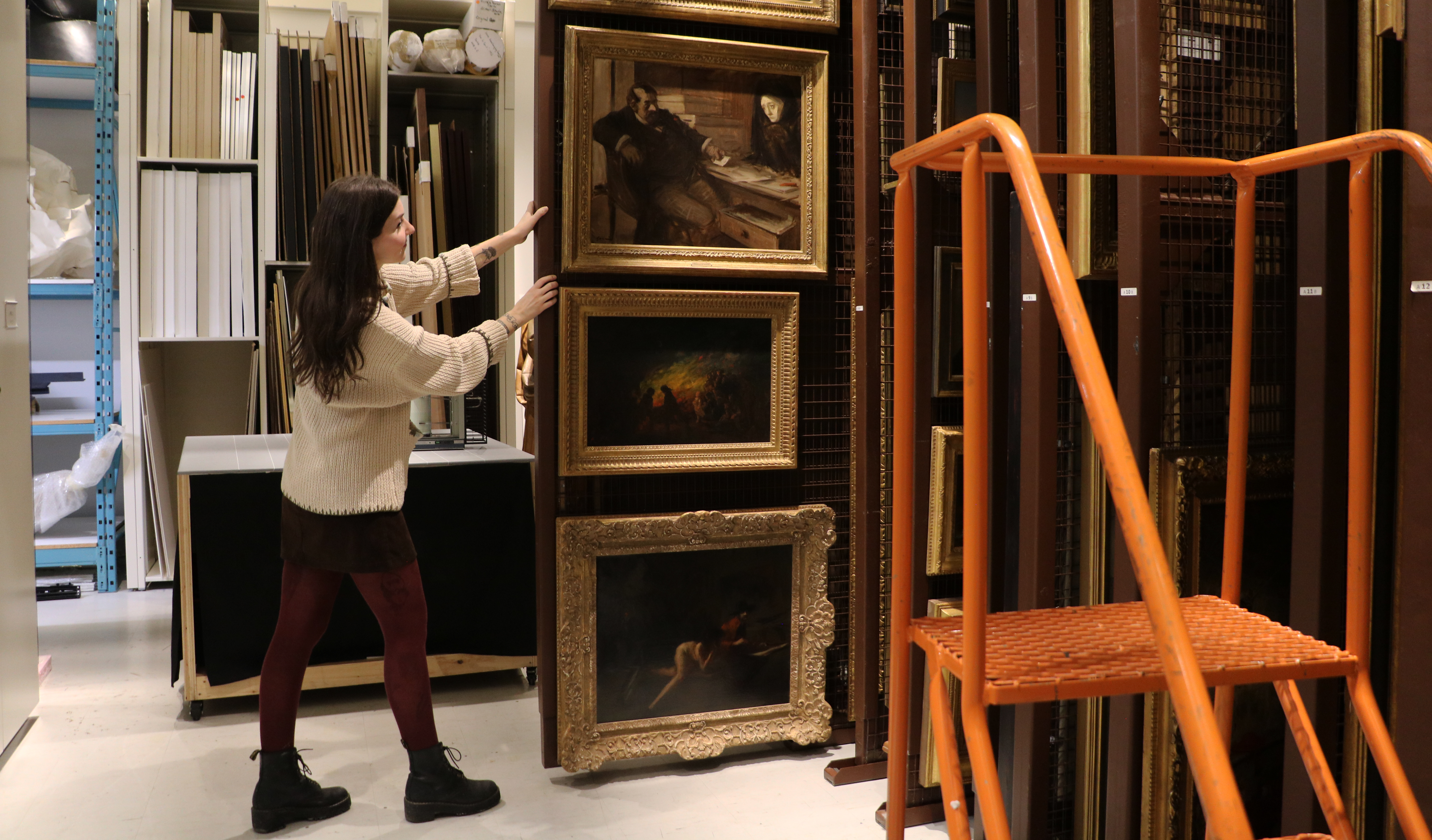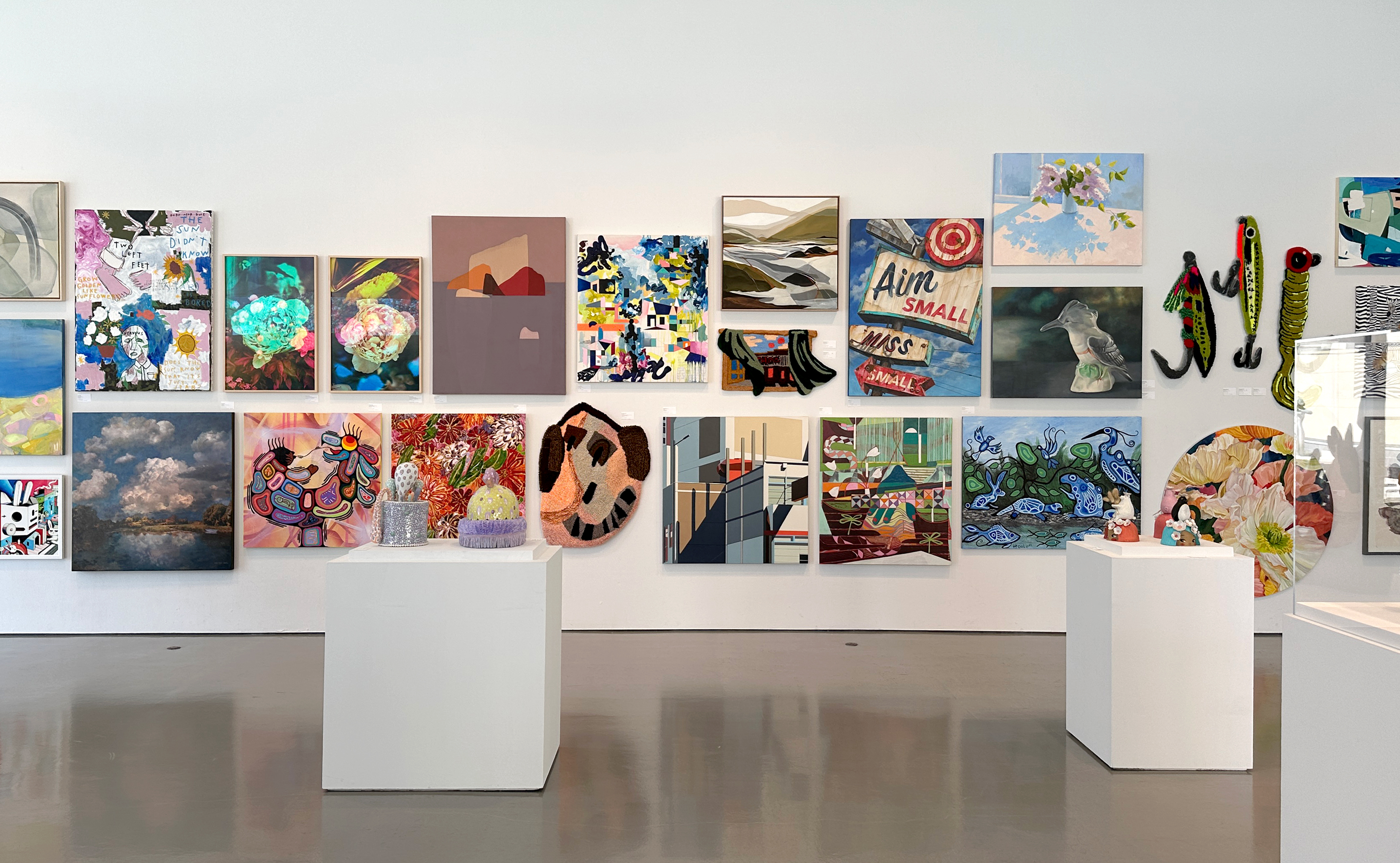Last month, REITZENSTEIN marked the conclusion of his yearlong residency at the AGH with an astonishing achievement: the completion of his thirty-foot-long tree drawing Maple (2019–20) (fig. 1). Over the past year, the artist, together with Gallery participants, steadily developed the collaborative artwork by writing rows of the word “maple” in dozens of different languages. Given the painstaking labour involved in creating Maple, Gallery visitors were often surprised to learn of its ephemerality. The work’s temporary existence is purposeful, underscoring the performative and process-oriented aspects of REITZENSTEIN’s practice. But for those lamenting that this immensely popular piece no longer exists, we have exciting news to share: the AGH recently acquired two works from the series of text-based cedar tree drawings that inspired Maple!
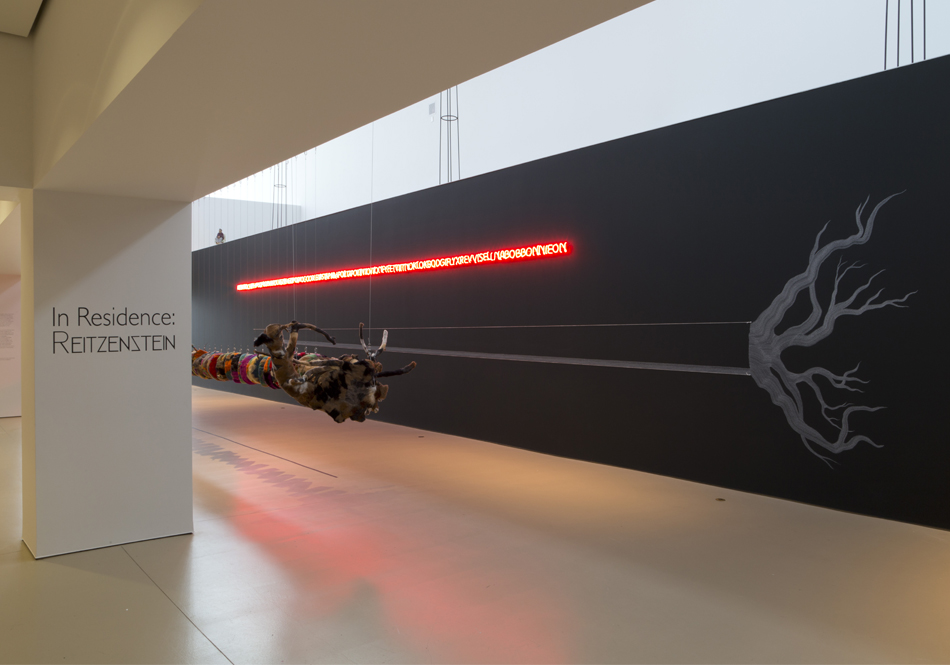
REITZENSTEIN’s tree drawings are more recent additions to his vast body of tree-based works, which includes installation, sculpture, photography, public art, and performance. Onta (Cedar in Oneida) (2018) (fig. 2) and Anenya (Cedar in Tuscarora) (2018–19) (fig. 3) form part of an ongoing series of six drawings of the cedar tree,[1] each composed entirely of the word “cedar” written repeatedly in one of the Six Nations languages. The miniscule lettering can only be read up close; from afar, the words visually blend together, creating a rich, rhythmic texture reminiscent of tree bark. Including up to 50,000 repetitions of a tree’s name,[2] REITZENSTEIN’s drawings require an extraordinary level of concentration, precision, and physical endurance to produce.
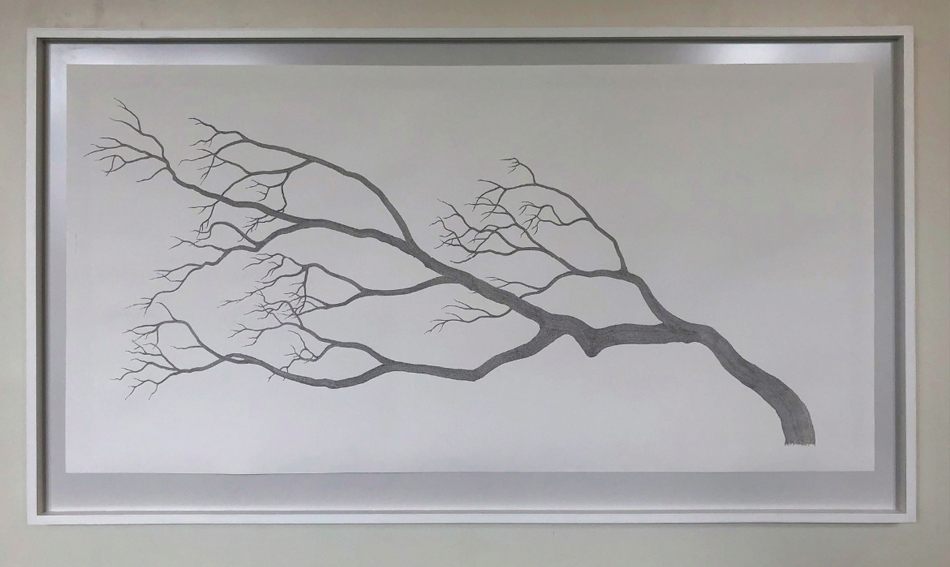
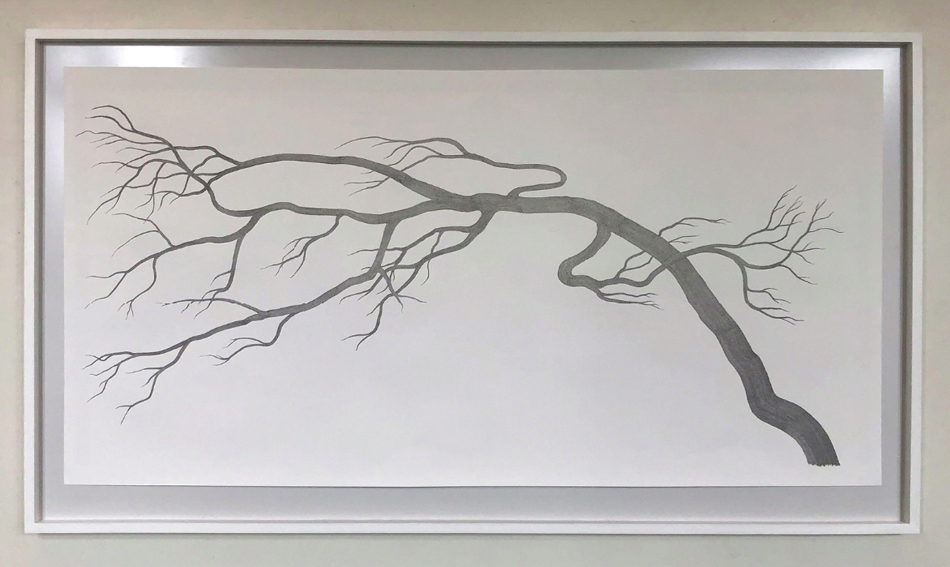
In German, the artist’s native tongue, cedars are known as Lebensbaum, meaning the “tree of life”—yet the artist’s spindly trees struggle to survive as they lean precariously to the left. As a therapeutic gesture, REITZENSTEIN speaks the name of the tree each time he writes it, casting an extended “incantation that gives strength and support to the [tree].”[3] Onta and Anenya symbolically fortify the symbiotic relationship between humans and trees—particularly between the Six Nations and the cedar tree. Cedar is one of the four main medicines grown and used by the Six Nations; it is commonly procured for cleansing and healing, although each nation has its own specific teachings related to the conifer.[4]
Honouring the ancient ties that Indigenous peoples in Canada have to their traditional land, REITZENSTEIN has collaborated with members of Indigenous communities on numerous art projects since the mid-1980s.[5] In creating Onta and Anenya, the artist consulted with Oneida and Tuscarora community members on the cultural significance of cedar, as well as its name in the Oneida and Tuscarora languages. By continuously repeating the tree’s name in his drawings, REITZENSTEIN powerfully asserts the need to support both the flora and the languages that give life to Indigenous communities.
To find out more about REITZENSTEIN’s work, read the AGH Magazine article the artist recently published, or watch our video of him summing up his experience as the inaugural artist-in-residence at the AGH.
[1] To date, three of the six drawings in the series have been completed; the third is entitled Onenta (Cedar in Mohawk) (2017).
[2] “Reinhard Reitzenstein: The Forest at 4am,” Olga Korper Gallery, accessed April 17, 2020, https://www.olgakorpergallery.com/exhibitions/view?id=92.
[3] Ibid.
[4] “The Medicines,” Our Sustenance, accessed April 17, 2020, http://oursustenance.ca/gardening-101/the-medicines/.
[5] Ted Rettig, “Contextualizing the Work of Reinhard Reitzenstein,” Espace Sculpture 25 (1993): 33.
